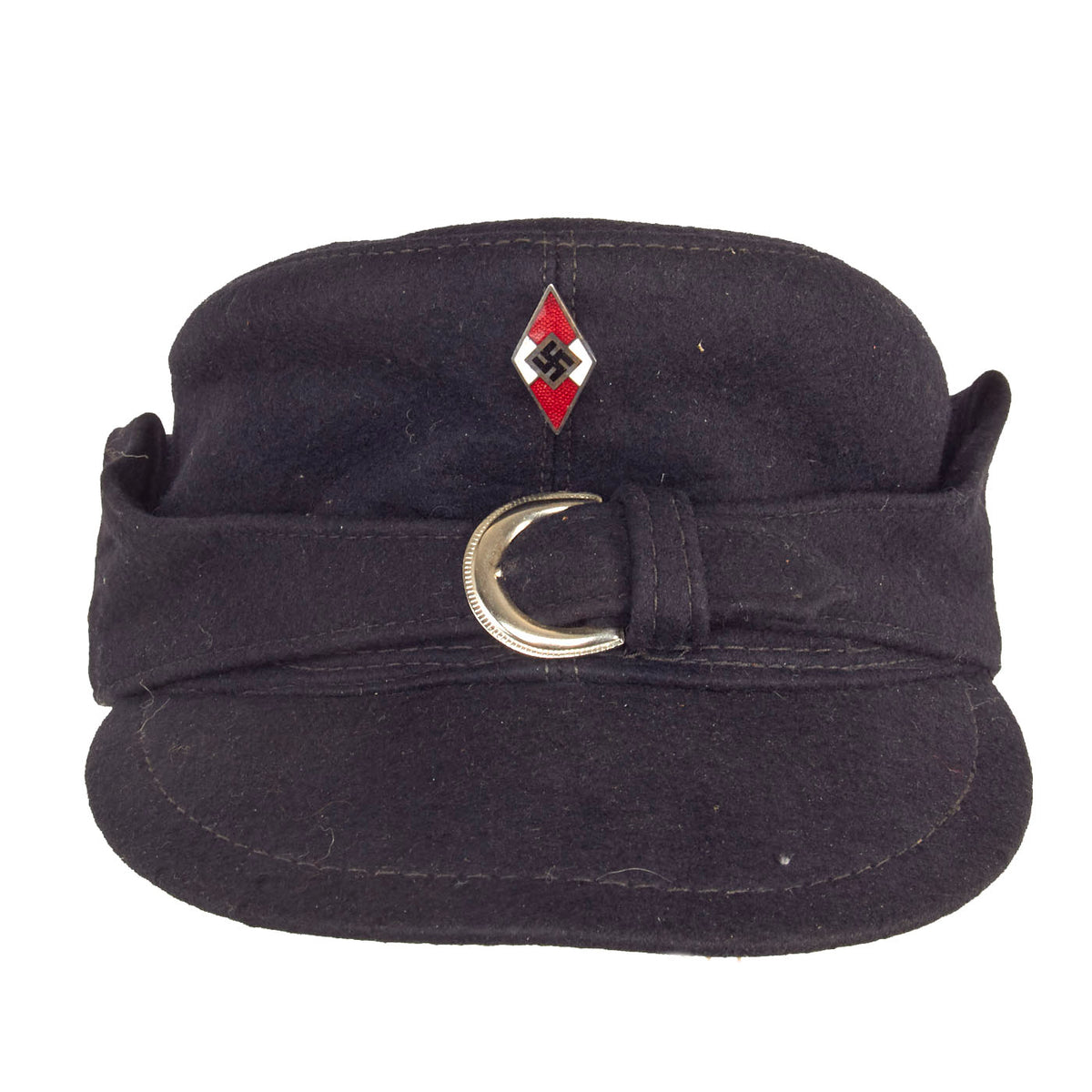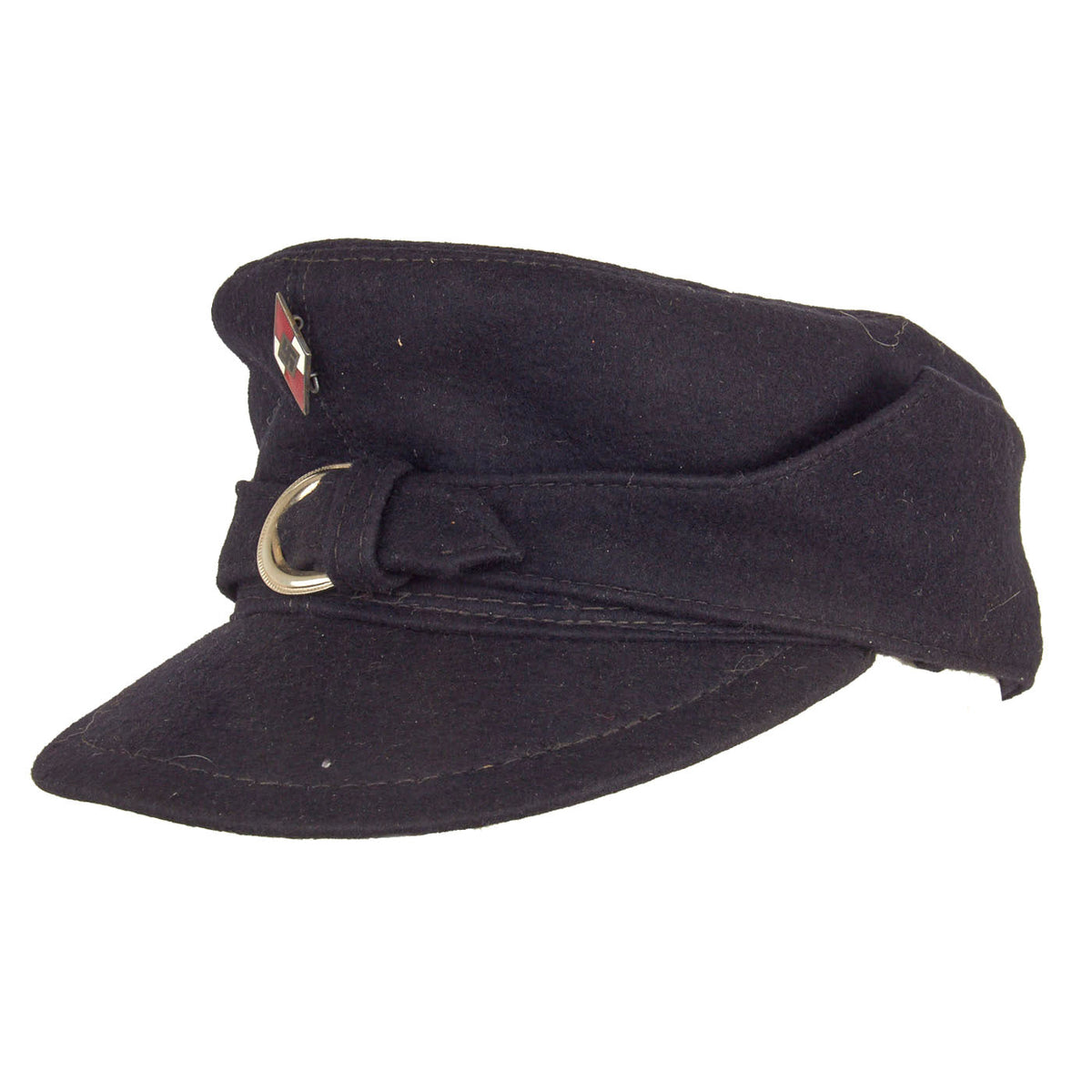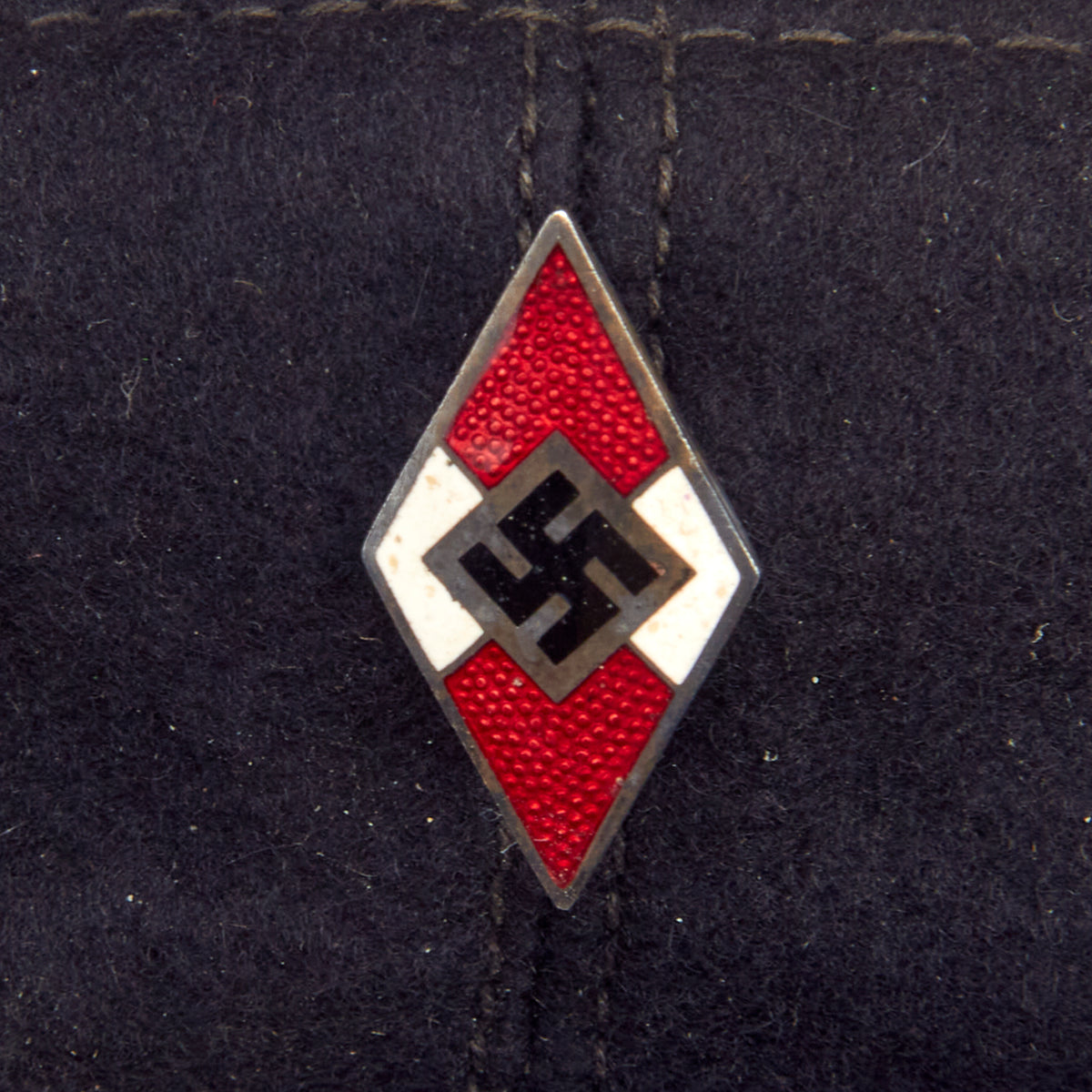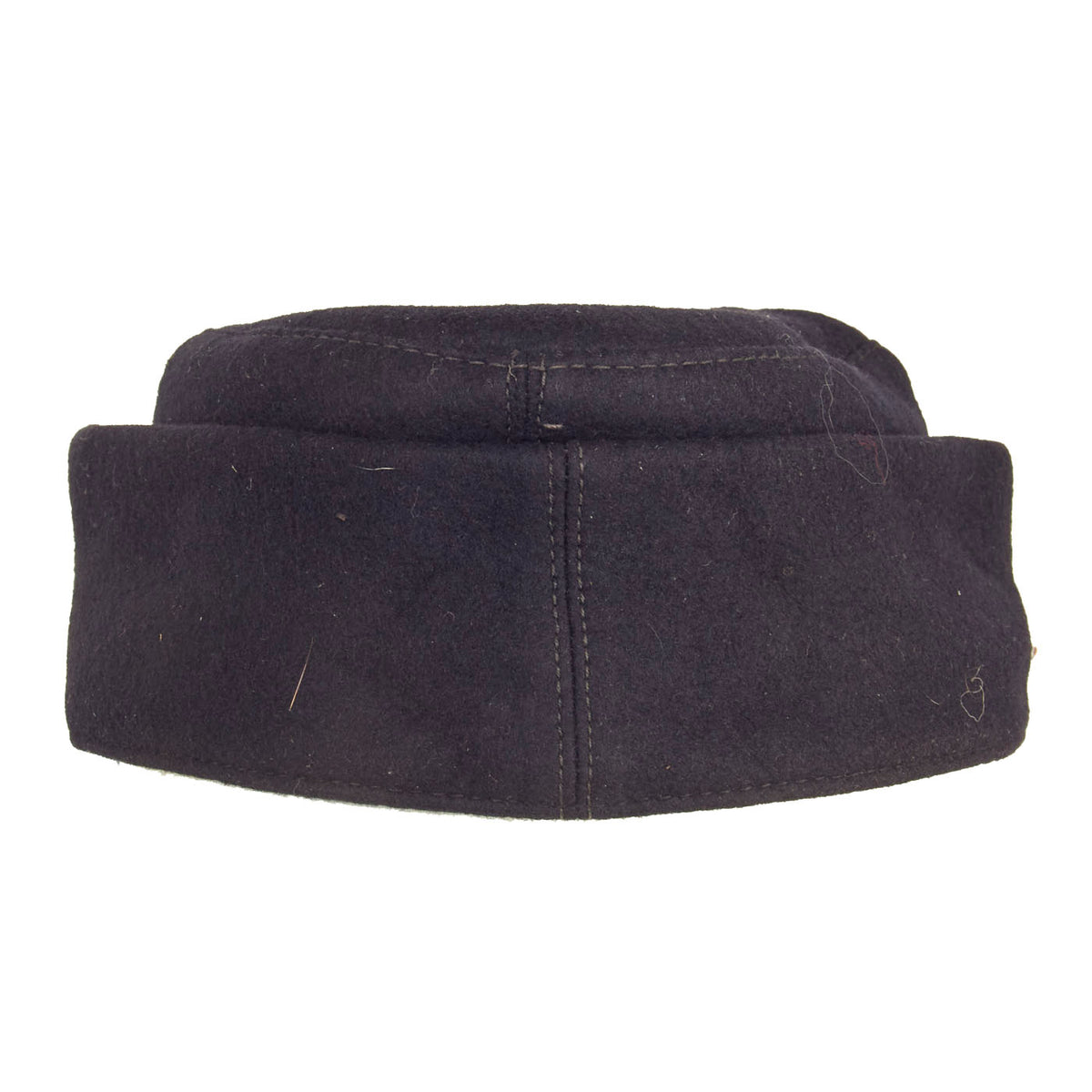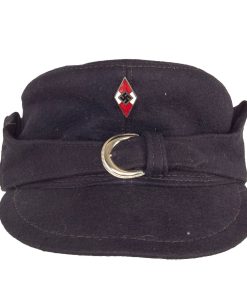Original German WWII 1939 dated HJ Ski8 Cap in Size 53 – Getes Skimütze Original Items
$ 595,00 $ 178,50
Original Item: Only One Available. This is a great looking German WWII HJ National Youth Organization Skimütze (Ski Cap), marked with Size 53 and dated 1939. It is constructed of blue worsted wool gabardine cloth, with fold-down panels with rounded scallops to the front and forward sides, covering the entire neck on the sides and rear when in use. When not in use, the panels are raised with their ends resting upon the visor, being joined together by a plated steel buckle. The visor is reinforced with cardboard, and covered in matching gabardine cloth.
The front top of the cap has a very nice early pattern enameled zinc HJ diamond emblem, which consists of a black mobile swas inside a white square diamond, which is surrounded by alternating white and red quadrants. The boarders between sections are plated metal, which now has oxidized to a lovely gray patina. The back of the insignia is maker marked by OTTO HOFFMANN, and is an early Pre-RZM version.
The interior of the cap is lined with lightweight gray oil cloth, showing just a bit of staining around the edge from wear. The top has a C 1939 date over a triangular logo with a skier in the middle, and Getes Skimütze at the bottom. Under this is the size 53.
Overall condition is very good, with just a few spots of wear and mothing to the wool body. The visor is still quite well shaped, with just a bit of bending to the cardboard stiffener, and no real cracks.
Overall, this is a great example of a lightly used size 53 HJ Skimütze, fully maker marked and dated. Ready to display!
HJ believed German youth to be the future of his 3rd Reich. The HJ (National Youth Organization) was formed officially in 1935, and with the exception of NSDAP ideology indoctrination was very similar to the Boy Scouts. Beginning at about the age of ten years, both boys (jugend) and girls (Bund Deutscher Mädel) were enlisted in the Party-run organization.
The HJ Skimütze Ski Cap was based on the Bergmütze (Mountain Hat) used by Austrian and German Gebirgsjäger (Mountain Troops) during WWI. Germany had adopted it in 1915, and after the war it spread throughout the military. It has the same fold down flaps, which can be placed over the ears during cold weather, and is secured with a buckle.
Fast Shipping with Professional Packaging
Thanks to our longstanding association with UPS FedEx DHL, and other major international carriers, we are able to provide a range of shipping options. Our warehouse staff is expertly trained and will wrap your products according to our exact and precise specifications. Prior to shipping, your goods will be thoroughly examined and securely secured. We ship to thousands clients each day across multiple countries. This shows how we're dedicated to be the largest retailer on the internet. Warehouses and distribution centres can be located throughout Europe as well as the USA.
Note: Orders with more than one item will be assigned a processing date depending on the item.
Before shipping before shipping, we'll conduct a thorough inspection of the items you have ordered. Today, the majority of orders will be delivered within 48 hours. The delivery time will be between 3-7 days.
Returns
The stock is dynamic and we cannot completely manage it because multiple stakeholders are involved, including our factory and warehouse. So the actual stock may alter at any time. It's possible that you may not receive your order once the order has been made.
Our policy is valid for a period of 30 days. If you don't receive the product within 30 days, we are not able to issue a refund or an exchange.
You can only return an item if it is unused and in the same state as the day you received it. You must have the item in its original packaging.
Related products
Uncategorized
Uncategorized
Uncategorized
Uncategorized
Band of Brothers ORIGINAL GERMAN WWII Le. F.H. 18 10.5cm ARTILLERY PIECE Original Items
Uncategorized
Uncategorized
Uncategorized
Uncategorized
Armoured Fighting Vehicles of the World: AFVs of World War One (Hardcover Book) New Made Items
Uncategorized
Uncategorized
Uncategorized
Uncategorized
Uncategorized
Uncategorized
Uncategorized
Uncategorized
Angolan Rebel 1970s era 60mm Inert Display Mortar from Angolan Civil War Original Items
Uncategorized
Uncategorized
Uncategorized
Uncategorized
Armored Burgonet Helmet & Polearm from Scottish Castle Leith Hall Circa 1700 Original Items
